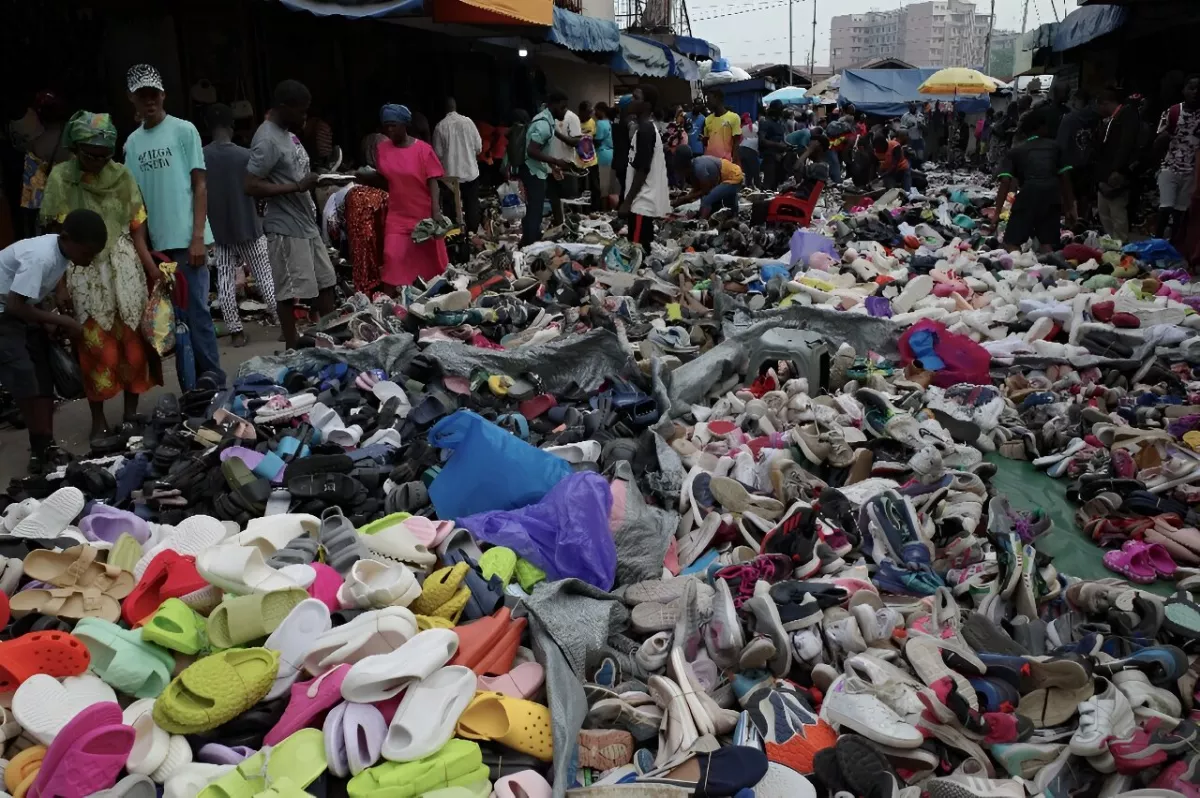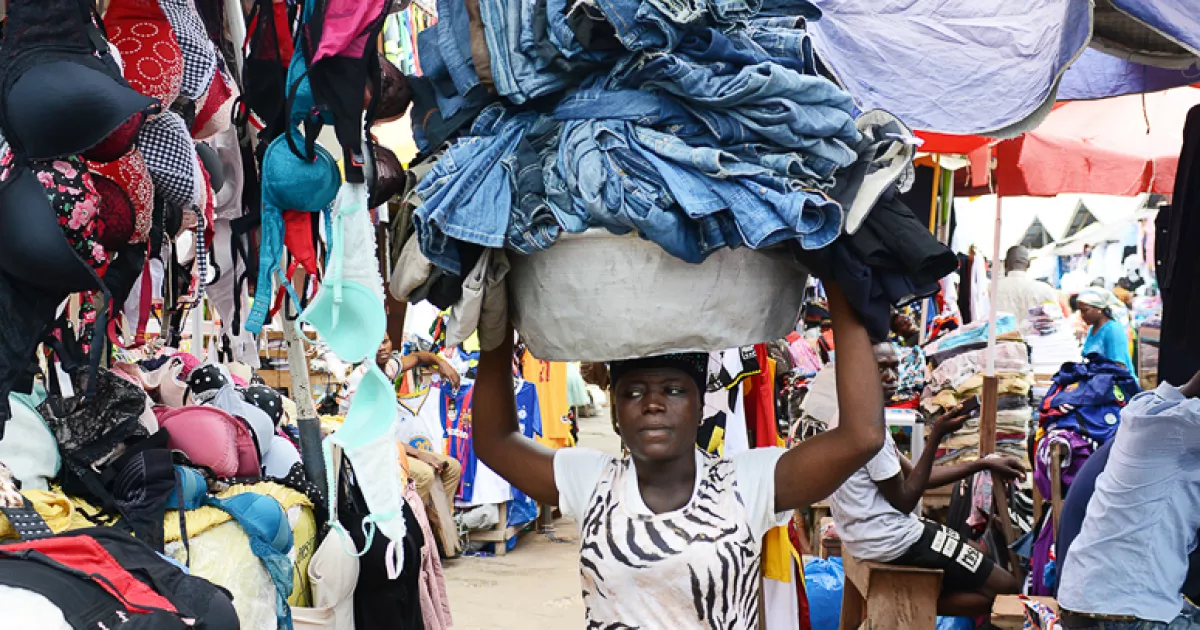How Ghana's garment traders are sinking under avalanche of used clothes “Dead white man's clothes”
Many of us have tossed old clothes into local donation bins, feeling assured they’ll help someone in need—perhaps sold in a charity shop, given to a homeless person, or sent to refugees abroad. But that hopeful image rarely reflects reality. Much of the clothing donated with good intentions ends up in landfills, often as far away as Ghana.
The American TIME magazine sheds light on the issue, reporting that Ghana imported $214 million worth of used clothing in 2021 alone—more than any other country—and remains one of the top dumping grounds for fast fashion.
Kantamanto, a sprawling 42-acre secondhand market in Accra, is at the center of this trade. It receives around 15 million garments weekly—about 225,000 tons each year. Inside its maze-like alleys, visitors find everything from used sneakers and jackets to bras, belts, and business attire. Most of these clothes are sold by Western charities in bulk to third-party traders, who ship them from the UK, the US, and Europe. Locally, these are known as obroni wawu, or “dead white man’s clothes.”
Globally, over 80 billion new garments are bought each year—four times more than two decades ago. Roughly 57% of used clothes go to landfills, with another quarter incinerated. Australians now lead the world in per capita clothing purchases, buying 56 items annually on average, just ahead of Americans at 53. Shockingly, about 65% are thrown away within a year, and wealthier parts of East Asia are increasingly contributing to the surplus.
Each Thursday, new shipments arrive in Accra and are distributed across Kantamanto’s 15,000 stalls, often by migrant women from northern Ghana who carry 50 kg bundles on their heads for less than $2 a day. Each bale is marked with its country of origin, item type, and a quality grade that determines the price.
Victoria Bamfo, 38, whose mother started their Kantamanto stall over 40 years ago, tells TIME she sells around four bundles a week, but it’s always a gamble. Her recent batch of “grade B” women’s blouses cost her $430 for about 170 pieces, with no promise of profit. Traders estimate that 30–40% of any bundle is unsellable—ripped synthetics or stained undergarments. “Sometimes you might sell 90%, sometimes just 30%,” she says. “But once you've bought it, you can’t return it.”
Kantamanto is not only a retail hub but also a distribution centre for used clothes throughout West Africa. Traders from Burkina Faso, Nigeria, Togo, and beyond visit to buy select items for resale. But only the initial sellers profit. “The charities, third parties, shipping firms—all make money. The trader pays for everything,” Bamfo laments.
Environmental burden to Ghana
The fate of unsold garments is grim. Some are picked up by waste services, but many are burned near the market or dumped in informal landfills. Tons of waste are blown into Korle Lagoon, Accra’s main drainage channel, polluting its waters with chemicals and dyes. President John Mahama calls it “the most polluted spot on Earth.”
To combat this, Yayra Agbofah founded The Revival, an NGO that upcycles unsellable textiles. Over the past two years, the group has salvaged 7 million garments, with a target of reaching 12 million annually. A partnership with London’s V&A Museum alone accounts for 2 million items turned into jackets, kimonos, and bags. Instead of discarding unsold clothes, traders can now bring them to The Revival, where tailors repurpose fabric scraps into new, wearable pieces.
Agbofah finds creative inspiration in local challenges—like pineapple farming, which exposes workers to pesticides and sharp fronds. In response, he designed protective overalls by stitching together denim garments. So far, 280 have been donated to farmers. “We want to outfit all 8 million farmers in West Africa,” he says.
Still, much of the waste—especially synthetic materials like polyester, nylon, or bloodstained military uniforms—is beyond rescue. To deal with this, The Revival is using a €200,000 grant from H&M Foundation to turn textile waste into housing bricks. The NGO plans to expand from 16 to 36 staff and hopes to process 20–30 tons of fabric daily by October.
But the burden isn’t just on Ghana. Pollution from land, water, and air caused 15.2% of all deaths in Ghana in 2015—twice as many as alcohol and drugs combined. The crisis has worsened with the rise of fast and ultra-fast fashion. Chinese-founded brand Shein, which earned $2 billion in profit in 2023, is named as a key driver. The company has faced criticism for labour violations and the environmental toll of its low-cost, disposable clothing.
Though Shein has partnered with a Ghanaian NGO to address some challenges, systemic issues persist. Activists like Agbofah and the Ghanaian government can only do so much. Lasting change depends on apparel companies producing more durable clothing and consumers embracing mindful habits: wearing garments longer, repairing rather than discarding, and donating only wearable items.
By Nazrin Sadigova










